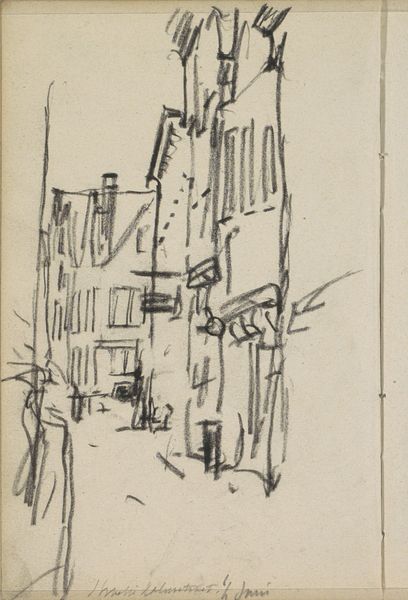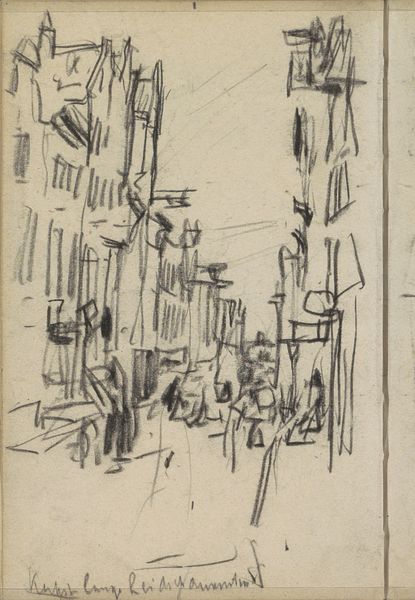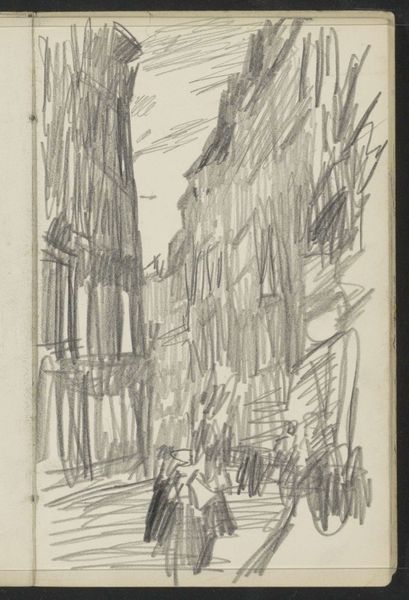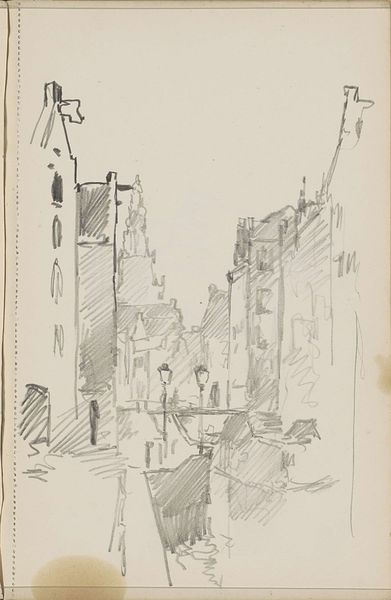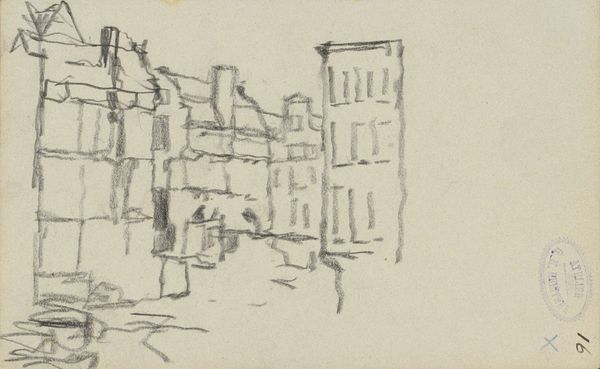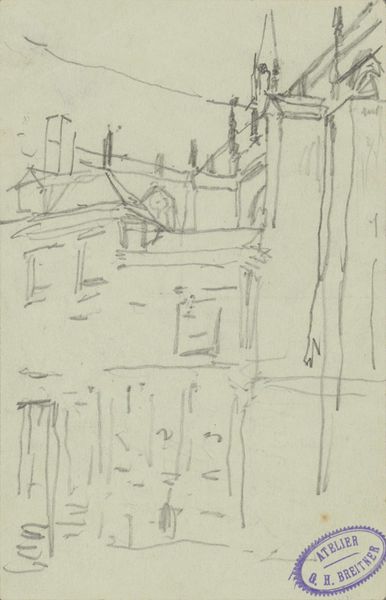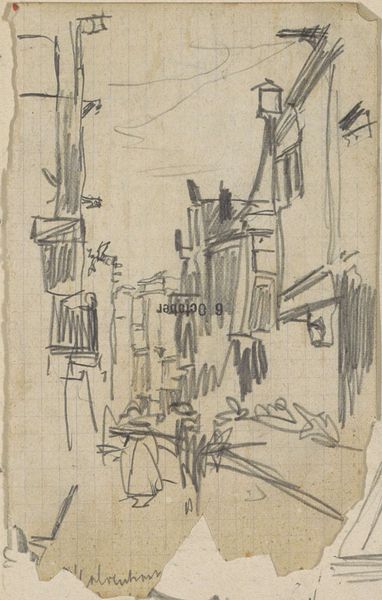
Gezicht op een steeg in Amsterdam, mogelijk in de buurt van de Nieuwendijk c. 1900 - 1923
0:00
0:00
Copyright: Rijks Museum: Open Domain
Editor: So, here we have "View of a lane in Amsterdam, possibly near the Nieuwendijk" by George Hendrik Breitner, dating from around 1900-1923. It's a pencil drawing, and it feels incredibly raw and immediate. It looks like a quick sketch that really captures the light in this Amsterdam alleyway, and that reminds me of Impressionism, but not like Monet. What do you see in this piece? Curator: What strikes me is how this work reflects the rapid urban development Amsterdam underwent at the turn of the century. Breitner was known for documenting the city's burgeoning social complexities, wasn’t he? This sketch isn't just a pretty picture. It gives us a glimpse into the urban experience, doesn’t it? Do you notice how the buildings seem to lean and crowd together, mirroring that intense feeling of density? Editor: Absolutely, there is something very heavy about how crowded it feels. I see that. And the stark lines, like it's devoid of the usual charming Amsterdam details we usually see. What purpose did it have? Was it meant as social commentary? Curator: That's precisely what Breitner's work often explored, and it’s important to see it in its socio-political context! The rapid growth came with issues of poverty and class division, especially the lower working class in that era. Breitner’s perspective here makes me think he deliberately chose this angle. What do you think this says about the evolving public role of art? Editor: Well, it definitely isn't just decoration, and I suppose it really demonstrates the socio-political factors influencing it, to reflect real life and make viewers consider these changes in society instead. I hadn’t initially considered that. Curator: Exactly, understanding the institutions and cultural background which formed Breitner’s experiences allows for this. Thinking about the "why" behind it has enhanced my own interpretation, too. Thanks!
Comments
No comments
Be the first to comment and join the conversation on the ultimate creative platform.
